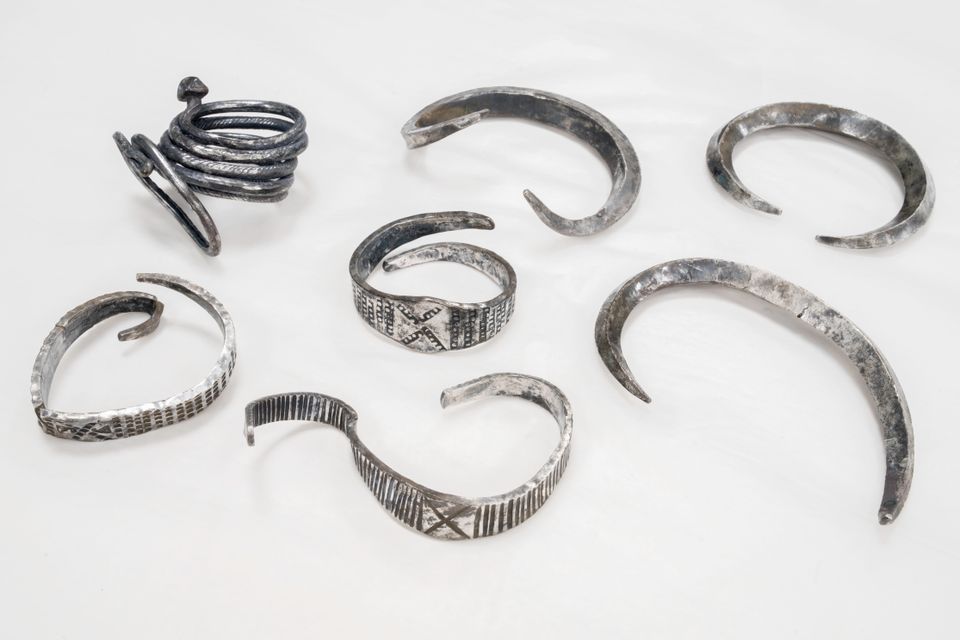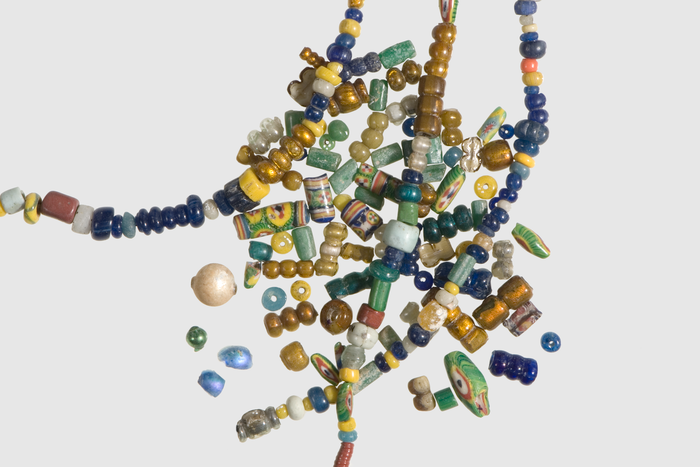Denmark student unearths ‘spectacular’ Viking Age silver treasure
Discovery shows Aarhus was an international Viking Age trade hub
An archaeology student in Denmark has unearthed a “spectacular silver treasure” from the Viking Age, shedding more light on early Scandinavian trade and economy.
Gustav Bruunsgaard, 22, from Aarhus University found seven silver bracelets while walking with a metal detector in a field near Elsted, where previous excavations had found traces of Viking Age settlements.
The treasure, weighing over half a kilogram, has been dated to the 9th century and may have represented “significant value” during the early Viking Age between 793AD to 1066AD in Scandinavia, experts said.
The bracelets may have been produced in southern Scandinavia, possibly Denmark, archaeologists said, adding that they formed part of a common weight system that allowed individual rings to be used as a means of payment.
One of the bangles has a coiled ring structure that originally came from Russia, while three band-shaped stamped bracelets seem to have inspired bangle designs that became popular in Ireland.

Three other bracelets uncovered have smooth designs which are rare but “known from Scandinavia and England”, researchers said.
The bangles are a “spectacular silver treasure”, according to the Moesgaard Museum, where it is now kept, showing that Aarhus was an international trade hub in the Viking Age with links to Russia, Ukraine and the British Isles.
“The Elsted farm treasure is a fantastically interesting find from the Viking Age, which connects Aarhus with Russia and Ukraine in the east and the British Isles in the west,” historian Kasper Andersen said in a statement.
“In this way, the find emphasises how Aarhus was a central hub in the Viking world, which went all the way from the North Atlantic to Asia.”

Silver jewellery and other artefacts unearthed in Scandinavian countries, including Denmark and Norway, have helped trace the trade routes between Europe and the rest of the world from the Viking Age.
Archaeologists have previously shown that the Viking Age, specifically the time between 750AD and 1000AD, saw some of the “most spectacular” episodes of pre-modern global connectivity.
This was a time when there were trade links established between the burgeoning Islamic empire in the Middle East and virtually all corners of Afro-Eurasia.

A previous study of a silver ring found in Sweden and dating to 850AD suggested there was likely close contact between Scandinavians and the Islamic world during the Viking Age.
The silver ring with violet-coloured glass, first unearthed in the 1800s, carried an inscription “for Allah” or “to Allah” in an ancient Arabic script. The ring may “constitute material evidence for direct interactions between Viking Age Scandinavia and the Islamic world”, researchers wrote in the 2015 study.
Join our commenting forum
Join thought-provoking conversations, follow other Independent readers and see their replies
Comments
Bookmark popover
Removed from bookmarks